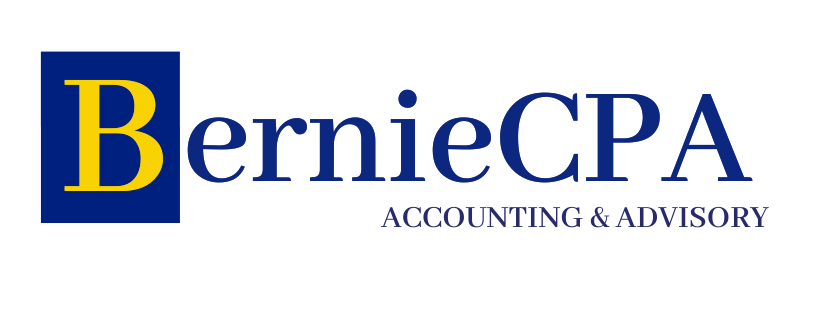Demystifying Quarterly Taxes: Everything You Need to Know to Stay on Track
Quarterly taxes are a system used by the Internal Revenue Service (IRS) to collect income tax from individuals and businesses who do not have taxes withheld from their income throughout the year. This typically includes self-employed individuals, freelancers, independent contractors, and small business owners. The purpose of quarterly taxes is to ensure that these individuals and businesses are paying their taxes in a timely manner, rather than waiting until the end of the year to make a lump sum payment. By paying taxes quarterly, taxpayers can avoid penalties and interest on underpaid taxes, and also spread out their tax payments over the course of the year.
For self-employed individuals and small business owners, it’s important to understand whether you are required to pay quarterly taxes. Generally, if you expect to owe $1,000 or more in taxes when you file your annual tax return, you are required to make quarterly tax payments. Additionally, if you are a corporation, partnership, or sole proprietor with net earnings of $400 or more, you are also required to pay quarterly taxes. It’s important to note that even if you are not required to pay quarterly taxes, it may still be beneficial to do so in order to avoid a large tax bill at the end of the year.
How to Calculate Your Quarterly Tax Payments: Tips for Self-Employed Individuals and Small Business Owners
Calculating your quarterly tax payments can be a daunting task, especially for those who are new to the process. The first step is to estimate your annual income and deductions, as well as any credits or other tax benefits you may be eligible for. From there, you can use the IRS Form 1040-ES to calculate your estimated tax liability for the year. This form will help you determine how much you should be paying in quarterly taxes based on your expected income and deductions.
For self-employed individuals and small business owners, it’s important to keep accurate records of your income and expenses throughout the year in order to accurately estimate your quarterly tax payments. This may include keeping track of invoices, receipts, and other financial documents that can help you determine your taxable income. Additionally, it’s important to stay up to date on any changes to the tax code that may impact your tax liability, as well as any changes to your business that may affect your income or expenses.
Important Deadlines and Penalties: What Happens if You Miss a Quarterly Tax Payment?
Quarterly tax payments are due four times a year, typically on April 15th, June 15th, September 15th, and January 15th of the following year. It’s important to mark these dates on your calendar and set reminders for yourself to ensure that you don’t miss a payment. If you do miss a quarterly tax payment, you may be subject to penalties and interest on the underpaid amount. The penalty for underpayment of estimated tax is generally based on the amount of the underpayment and the length of time it remains unpaid.
If you miss a quarterly tax payment, it’s important to make the payment as soon as possible in order to minimize the penalties and interest you may owe. Additionally, it’s important to adjust your future quarterly tax payments to account for the missed payment in order to avoid further underpayment penalties. If you are unable to make a quarterly tax payment due to financial hardship or other circumstances, it’s important to contact the IRS as soon as possible to discuss your options and potentially set up a payment plan.
Strategies for Managing Your Cash Flow: Balancing Quarterly Tax Payments with Other Financial Obligations
Managing cash flow can be a challenge for self-employed individuals and small business owners, especially when it comes to making quarterly tax payments. One strategy for managing cash flow is to set aside a portion of your income each month specifically for taxes. This can help ensure that you have enough money set aside to make your quarterly tax payments without impacting your ability to cover other financial obligations. Additionally, it’s important to regularly review your financial statements and cash flow projections in order to identify any potential cash flow issues before they become a problem.
Another strategy for managing cash flow is to consider using a business line of credit or small business loan to cover your quarterly tax payments if necessary. This can help alleviate any short-term cash flow issues while still ensuring that you are meeting your tax obligations. However, it’s important to carefully consider the terms of any loan or line of credit in order to ensure that it is a viable option for your business.
Utilizing Tax Deductions and Credits to Lower Your Quarterly Tax Burden
One way to lower your quarterly tax burden is by taking advantage of tax deductions and credits that may be available to you as a self-employed individual or small business owner. This may include deductions for business expenses such as office supplies, travel expenses, and professional fees, as well as credits for things like research and development or energy-efficient equipment. By carefully tracking your expenses and staying up to date on changes to the tax code, you can ensure that you are taking advantage of all available deductions and credits in order to lower your tax liability.
Additionally, it’s important to consider any retirement savings contributions or health savings account contributions that may be deductible from your taxable income. By contributing to these accounts, you can lower your taxable income and potentially reduce your quarterly tax payments. It’s important to consult with a tax professional or financial advisor in order to fully understand the deductions and credits that may be available to you based on your individual circumstances.
Working with a Tax Professional: How to Ensure You’re Meeting Your Quarterly Tax Obligations Correctly
For many self-employed individuals and small business owners, working with a tax professional can be an invaluable resource when it comes to meeting quarterly tax obligations. A tax professional can help ensure that you are accurately estimating your quarterly tax payments based on your income and expenses, as well as any changes to the tax code that may impact your tax liability. Additionally, a tax professional can help you identify potential deductions and credits that may be available to you in order to lower your quarterly tax burden.
When working with a tax professional, it’s important to provide them with accurate and up-to-date financial information in order to ensure that they can accurately estimate your quarterly tax payments. This may include providing them with copies of your financial statements, receipts for business expenses, and any other relevant financial documents. Additionally, it’s important to stay in regular communication with your tax professional in order to address any questions or concerns that may arise throughout the year.
Long-Term Planning: How to Use Quarterly Taxes to Prepare for Year-End Tax Filings
Quarterly taxes can also be an important tool for long-term tax planning for self-employed individuals and small business owners. By accurately estimating and making quarterly tax payments throughout the year, you can avoid a large tax bill at the end of the year and potentially reduce the risk of owing penalties and interest on underpaid taxes. Additionally, by staying up-to-date on changes to the tax code and working with a tax professional, you can identify potential opportunities for tax planning based on your individual circumstances.
One strategy for long-term tax planning is to regularly review your financial statements and cash flow projections in order to identify any potential changes in your income or expenses that may impact your tax liability. By staying proactive and regularly reviewing your financial information, you can make adjustments to your estimated quarterly tax payments as needed in order to avoid underpayment penalties. Additionally, it’s important to consider any potential changes in the tax code that may impact your business or personal finances in order to ensure that you are taking advantage of all available opportunities for tax planning.
In conclusion, understanding how quarterly taxes work and how they apply to self-employed individuals and small business owners is an important part of managing your finances throughout the year. By accurately estimating and making quarterly tax payments, utilizing deductions and credits, managing cash flow, working with a tax professional, and engaging in long-term tax planning, you can ensure that you are meeting your quarterly tax obligations correctly while also preparing for year-end tax filings. It’s important to stay proactive and regularly review your financial information in order to identify any potential issues or opportunities for tax planning based on your individual circumstances. By taking these steps, you can ensure that you are meeting your quarterly tax obligations while also maximizing opportunities for long-term financial success.


